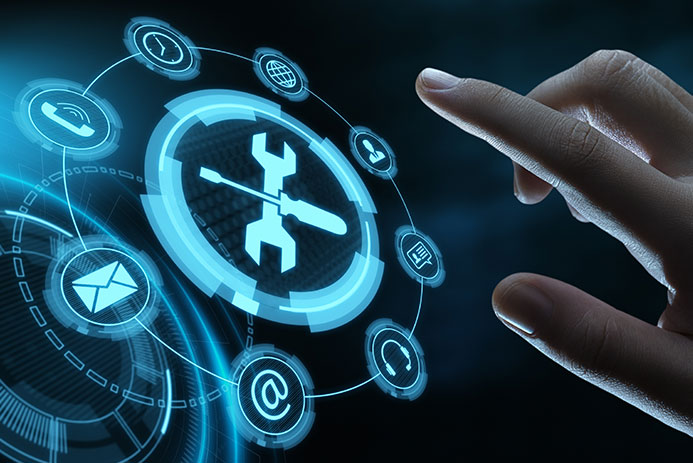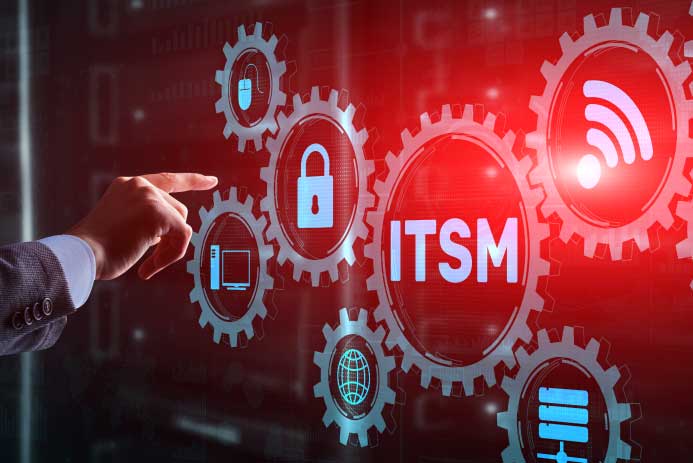ITSM
Sep 26, 2024
The Role of ITSM in Digital Transformation
Businesses are constantly seeking means to improve efficiency, enhance customer experiences, and stay competitive. Digital transformation is at the heart…
ITSM
Published on June 23, 2022

One of the most important, but also among the most neglected business processes has been IT Service and Asset Management. Enterprise outlook towards it, until recent years, has been of a supporting component of the overall business process chain. However, with customer and employee experience gaining centerstage and with the focus on user-friendliness in today’s experience-led business environment, IT Service Management (ITSM) is gaining greater emphasis in digital strategies.
This shift in outlook can also be attributed to enterprise growth and the resultant complexities for IT teams, particularly more in a distributed, hybrid work environment. It often becomes difficult for IT service and support teams to monitor, manage and respond to each instance, further added by the challenges of ad-hoc tasks in a growing business.
In a world defined by hyper-connectivity, wherein both end customers and employees are digitally connected to businesses like never before, conventional frameworks of ITSM prove obsolete and inefficient. Traditional service and support delivery via emails lacks defined structure and involves longer timelines – from request logging to resolution. This renders it inefficient, while also leaving adverse impact on productivity and user experiences.
In a typical scenario, even with a layer of some dedicated tools in place, enterprises initiate their ITSM journey with process documentation and implementation of simple tools for managing delivery of IT assets, software and services.
Need for structured ITSM process
The stepping-stone to establish a defined ITSM process includes adoption of industry best practices. In this case, Information Technology Infrastructure Library, widely known as ITIL, a recognised framework that helps organisations identify and implement the most powerful and best-suited ITSM tool to handle their IT service management tasks. While ITIL holds greater importance for organisations without or little ITSM capabilities, it is also essential for enterprises with slightly matured mechanisms to re-evaluate their ITSM processes and realign them with the latest practices for the most efficient operations, enhanced experiences and ensuring holistic digitisation.
ITSM vs ITIL
To understand the difference between the two, it should be noted that ITIL and ITSM are complementary in nature. While ITSM is the application of policies, best practices and processes for managing IT services rendered to employees and customers, ITIL is essentially the framework that lays down these practices and guidelines to help enterprises navigate through ITSM tools and implement them in their digital infrastructure.
Let’s understand what enterprises gain with a robust ITSM practice and how it forms a critical component of their larger digitisation initiatives.
Kickstart your ITSM journey with S-Cube
Overriding cluttered ITSM solutions, S-Cube provides a more efficient, simple, streamlined, reliable and end-to-end ITSM tool for organisations of any scale or nature. Powered by eStomi Technologies and backed by Yotta’s trusted cloud platform, Yotta Enterprise Cloud, S-Cube delivers complete capabilities to enterprises to customise the tool as per their business needs. It features a fully functional ITSM Baseline based on ITIL 4 that ensures greater alignment with new ways of working. A cloud-based, full-stack platform for IT and helpdesk support and service, S-Cube helps enterprise IT teams manage end-to-end customer support services, including all the processes and activities to design, create, deliver, and support IT and helpdesk services.

ITSM
Sep 26, 2024
Businesses are constantly seeking means to improve efficiency, enhance customer experiences, and stay competitive. Digital transformation is at the heart…

ITSM
Aug 16, 2023
Traditionally relegated to a support function focused on resolving technical issues, IT has emerged as a strategic enabler through the…

ITSM
Nov 29, 2022
How often have you looked at your technology infrastructure and thought, “There has got to be a better way to…